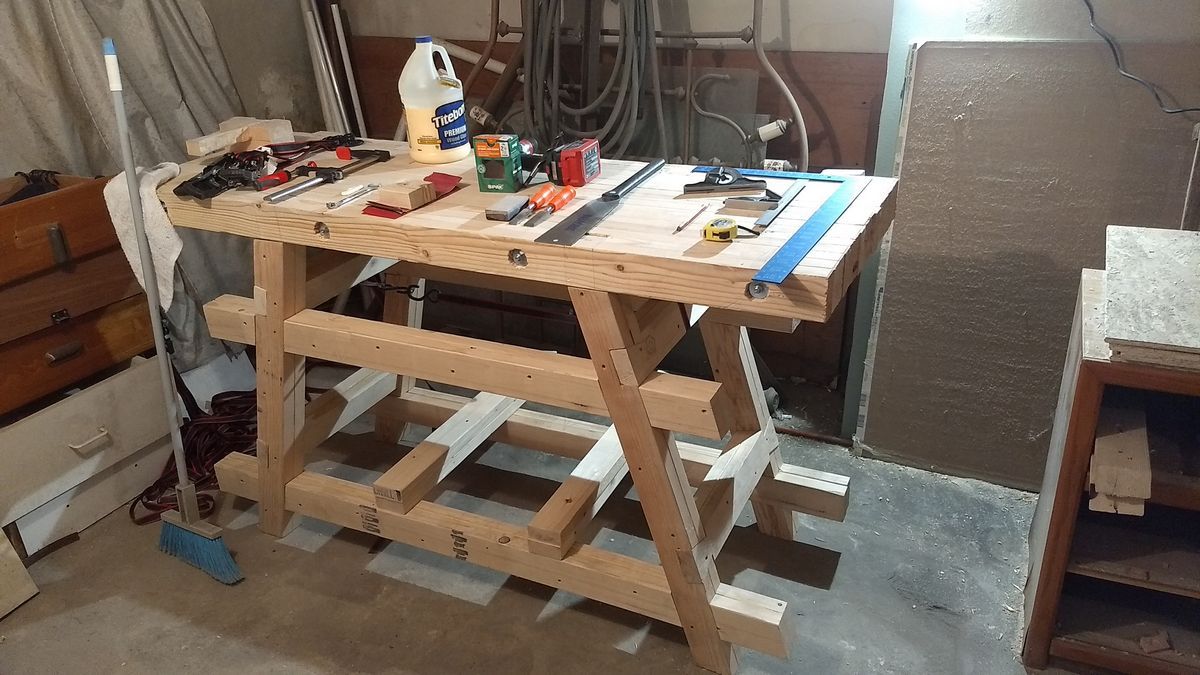
Concept
“Workbench is the first woodworker tool” goes the saying. I agree!
The question is: how do you build the workbench with almost no tools?
Traditional workbench are made using hardwood such as beech, not appropriate to minimal tooling and beginners, and expensive.
On the other end, internet is full of tutorial for “cheap” 2x4 workbenches. These are interesting, but invariably, the tutorials will use cheap wood, and very expensive/extensive tooling (planer, expensive hand plane, tones of clamps, etc.). This is not coherent at all for a real beginner.
This project shows how to build a sturdy, cheap, workbench using truly minimal tools. The total price is about 250 US$ (tools + consumable + wood), and the design is adapted to (dedicated) beginner.
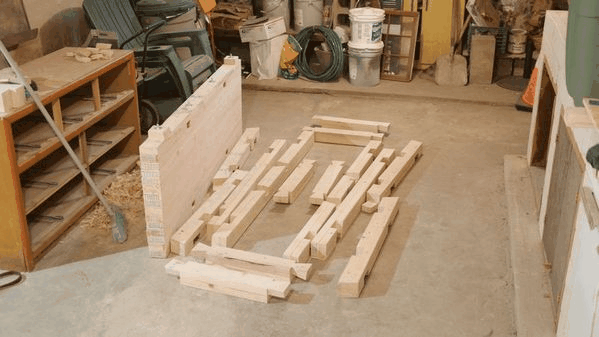
Minimal tool choice
For this project, I chose the absolute minimal tool you can get by with. Beginners are often recommender to buy high end tools to “save money in the long run”. Durability is important to me, but beginner should not buy high end tools.
You will make mistakes, you will drop tools, you will break you chisel edge, you will bend the saw, etc. Go with high end tools after you have made mistakes, and you deserver them. Furthermore, in the beginning, you gain more by investing time to train rather than by investing time to gain money to buy high end tools.
So what do you truly need for woodworking?
cutting tools
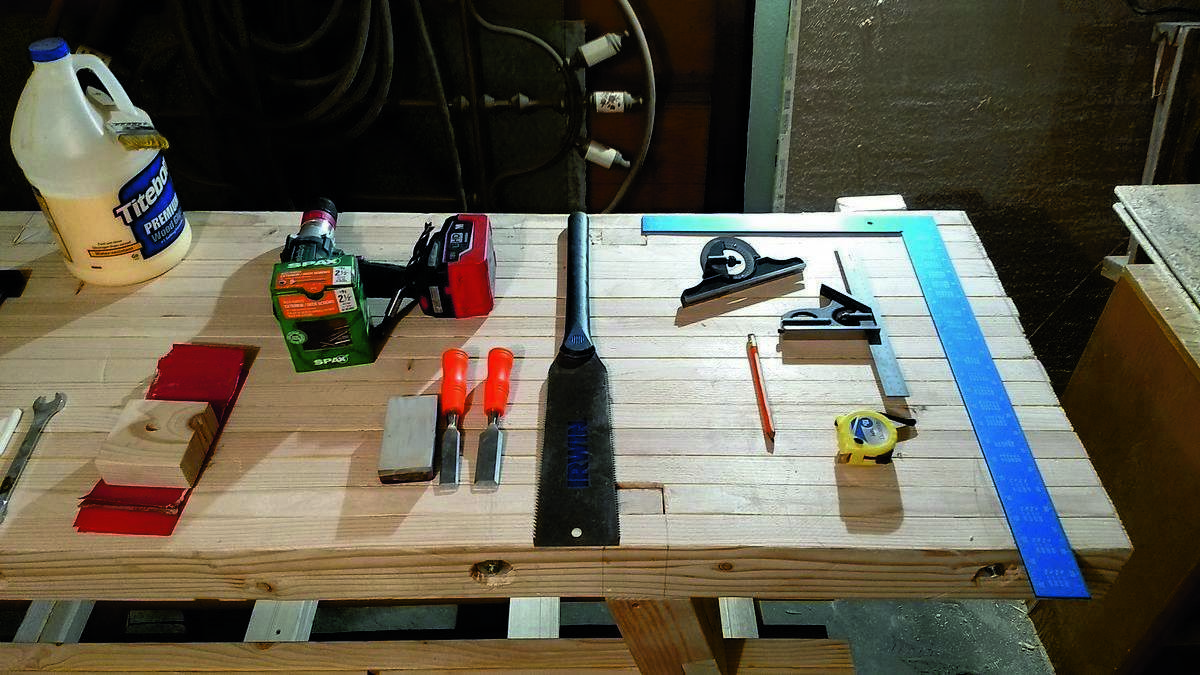
- 11$ : You’ll need two chisels. Chose ones that have metal strike area. Mines are the cheapest from HD.
- 20$ You’ll need a way to sharpen them. Fine sandpaper (e.g. 400,1k,2k,4k for instance), or water stone (e.g. combo 1k 4k). You don’t need a large stone/surface.
- 23$ you’ll need a Japanese saw (Ryoba).
- 5$ you’ll need sandpaper (80, 160 gritts) and a flat piece of wood to flatten things
- A drill/driver. Although formally not required, it is likely you have one and it is going to be helpful.
Measuring/drawing tools
Measuring/drawing is extremely important. It impacts precision and mistake probability.
- 10$: good light! Drawing heavily depends on lighting. Nowadays 2400 lumens light bulbs are cheap.
- 1$ : pencil. I like to have two. One very sharp for joins, the other for general purpose.
- 4$ : tape measure: will be used for everything except joints drawing.sandpaper
- 7$ : large square/straight edge (24 inch or more). Will be used for large scale checks (flatness, squareness)
- 10$: Cheap combination square. The angle setter is actually not required. You can adjust squareness with sand paper.
Holding work
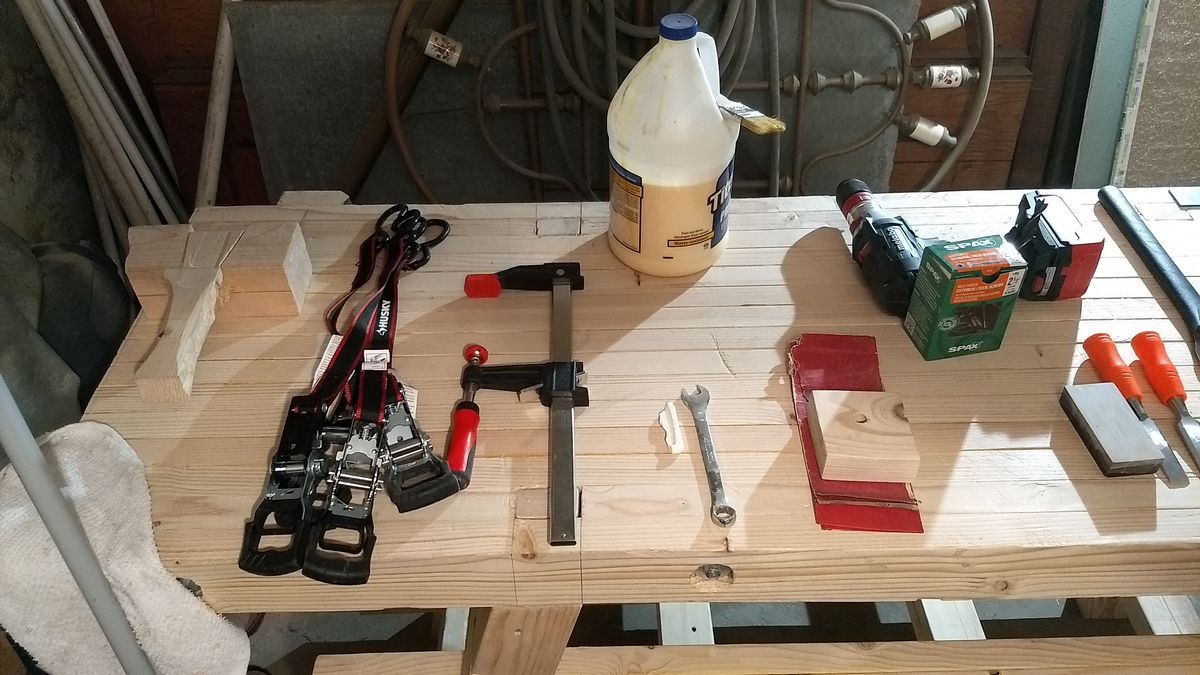
Work always need to be properly held. It impacts precision, noise, safety, etc.
- 16$ : Bar clamp, at least 8 inch opening.
- 10$ : basic ratchet straps (min x4). Not really used usually, but much cheaper that large clamps.
Consumables
- 0$ : a piece of hard soap. Will lubricate saw and joints.
- 15$ : wood screws. Self drilling. Driver bit bundled. Formally, you only need a few at a time for gluing. I prefer to leave them in the wood to reinforce flat gluing.
- 10$ : wood glue. I used less than 2L (bought 1 gallon for 20$).
- 1$ : brush for glue.
Cleaning
Underrated, but important
- 0$ : broom. Vaccum are convenient, but regular one quickly chock with wood shavings.
- 0$ : rags
- 3$ : plastic sheeting to protect your floor during gluing.
Wood
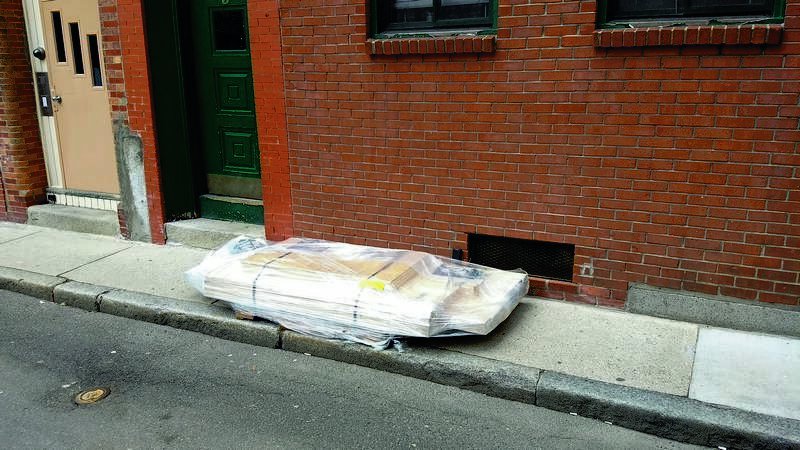 It depends a bit of the dimension you want, and the 2x4 length you have access to.
For me (1.6 x 0.5 x 0.98 m), it was about 20 2x4, with many leftover.
You should have extra for test/mistakes.
It depends a bit of the dimension you want, and the 2x4 length you have access to.
For me (1.6 x 0.5 x 0.98 m), it was about 20 2x4, with many leftover.
You should have extra for test/mistakes.
I also ordered OSB to protect the work area.
Do not take pressure treated lumber, try to find good quality, premium 2x4. Inspect and choose personally each stud (straight grain, no damage, no twist). It will take time (about 1 hour), but further work will be greatly facilitated. The total cost for 2x4 should be less than 100$.
Workbench design
See the dedicated entry.
Workbench build (tutorial)
There are many good resources to learn woodworking (books, videos, etc.). This tutorial expects you to learn what you need on the side, and only gives the information relative to the project. You most likely will need hours of research and reading, and to train for each step.
Similarly, you should train to use the Ryoba saw, square, and learn how to sharpen chisels.